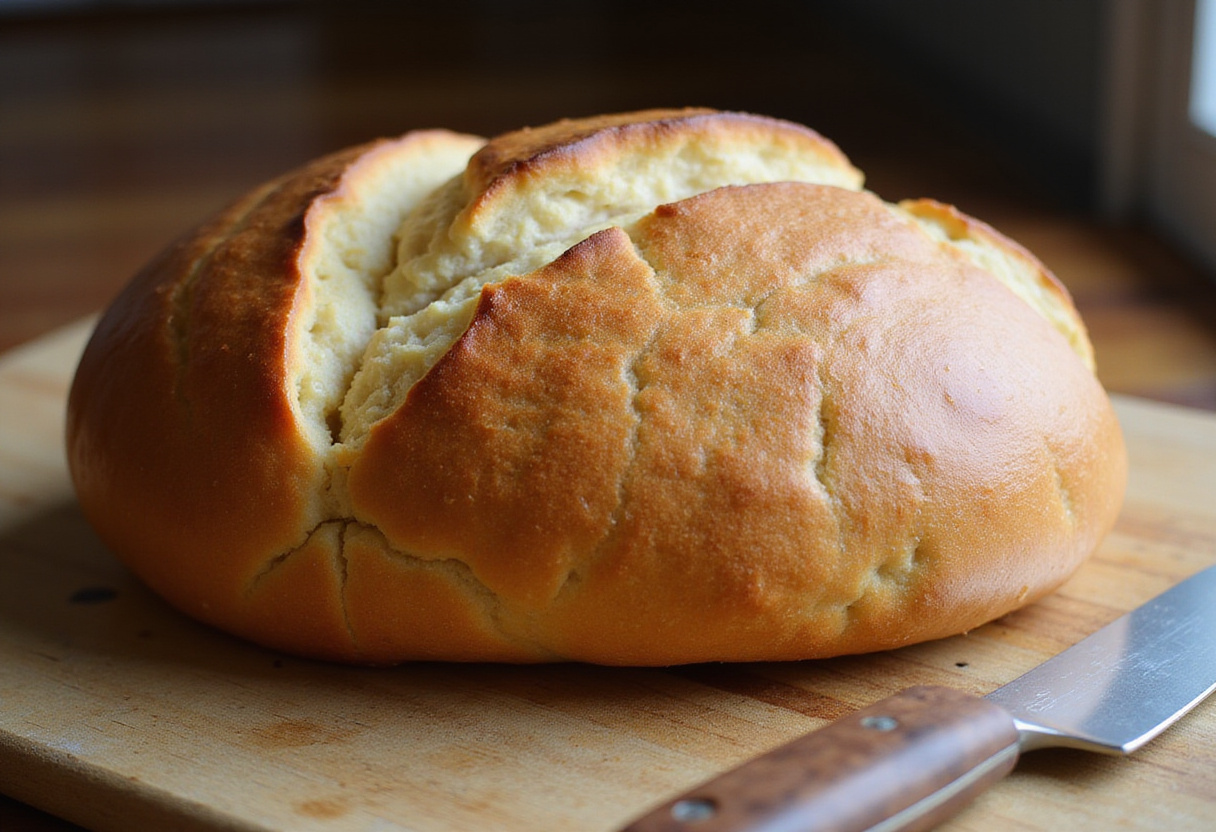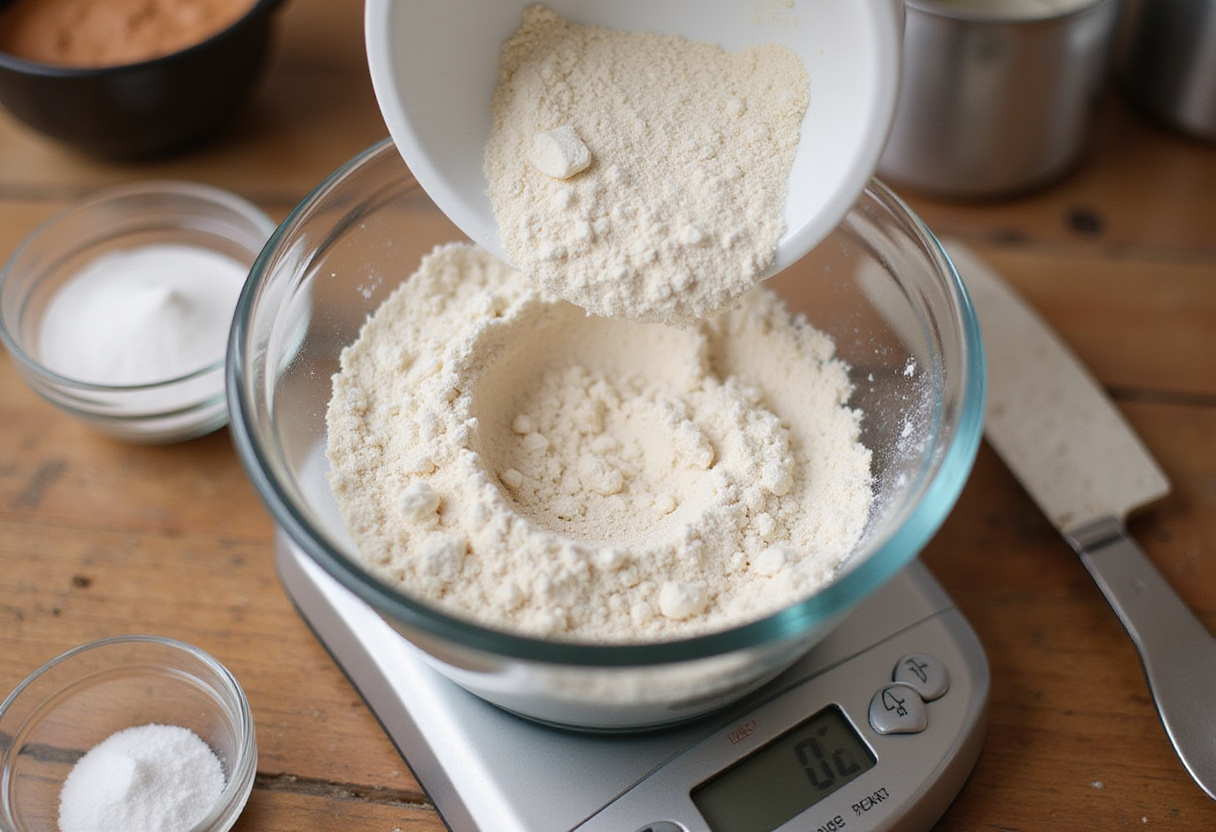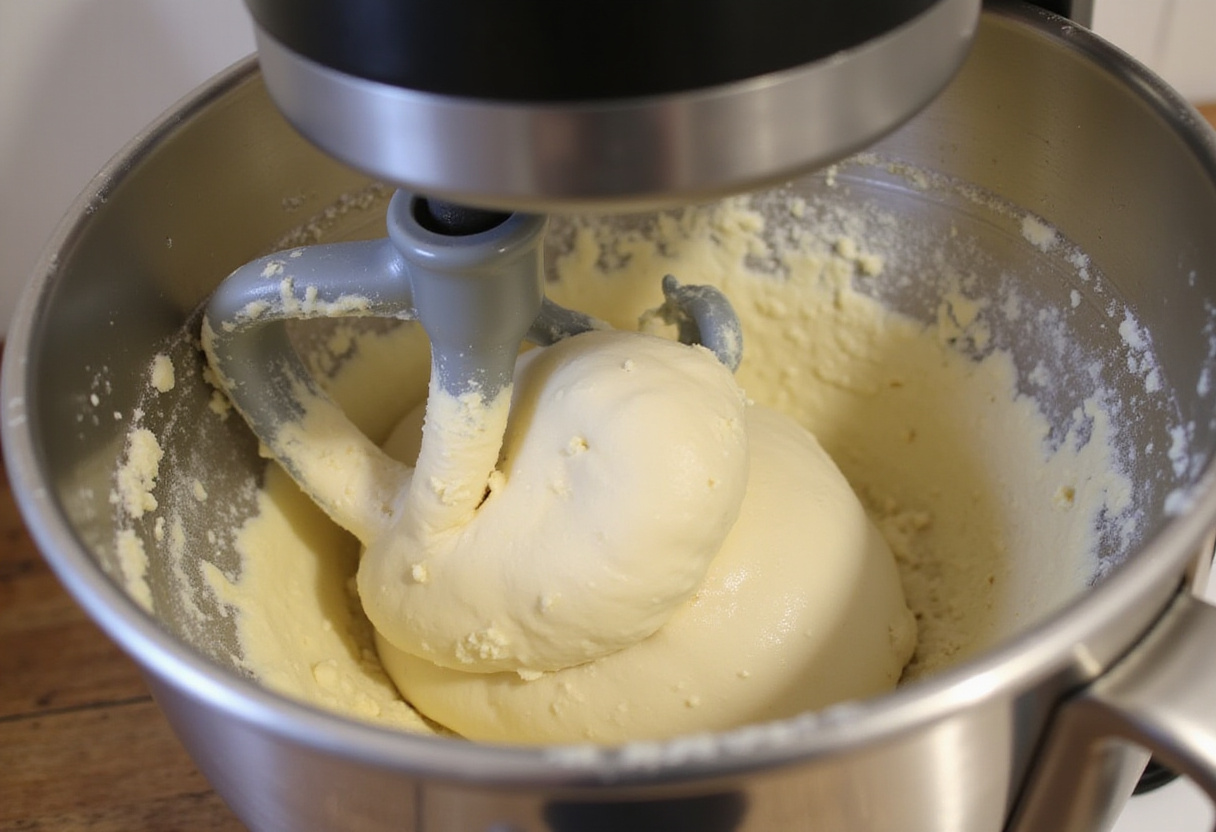My Go-To Recipe for Amazing Batard Bread: The Quintessential Crusty Loaf 🥖👩🍳🌟
1. Introduction
There’s simply nothing like the comforting aroma and satisfying taste of freshly baked bread wafting through your home. This incredible batard bread recipe is designed to bring that unparalleled experience directly into your kitchen. A classic french batard is celebrated as a quintessential loaf, instantly recognizable for its beautifully elongated shape and wonderfully delightful, crispy crust. This comprehensive guide provides an extraordinarily easy batard bread recipe, making it perfectly suited for both novice bakers taking their first steps and experienced bread-makers looking to refine their skills. Whether your aim is to craft an impressive artisan batard bread that will wow your guests, or you simply desire a reliably delicious loaf for your daily enjoyment, this recipe is guaranteed to become your trusted, go-to resource. Prepare yourself to create a true masterpiece that will not only elevate your everyday meals, but also profoundly impress your friends and family with your baking prowess. If you’re looking for other great recipes, consider exploring our main page for more ideas!

2. What is Batard Bread?
A batard bread is a versatile and delightful type of French bread that gracefully straddles the size spectrum between a baguette and a boule (a classic round loaf). Its distinctive shape is oblong, characterized by elegantly tapered ends, making it a visually appealing addition to any table. It’s highly prized among bread enthusiasts for its wonderfully crispy crust, which provides a satisfying textural contrast to its soft and airy interior. Originating from the rustic bakeries of France, the authentic french batard is incredibly versatile and can be beautifully enjoyed in a myriad of ways—from forming the basis of gourmet sandwiches filled with your favorite ingredients to being served as a perfect accompaniment alongside hearty soups and flavorful stews. Understanding the rich nuances and subtle intricacies of this exceptional bread significantly enhances the entire baking process, transforming it into a deeply rewarding culinary experience.
3. Why This Recipe Works
This exceptional batard bread recipe truly stands out from the crowd because it’s remarkably straightforward and exceptionally reliable, ensuring consistent and delightful results every time. We place a strong emphasis on using simple, high-quality ingredients and providing clear, easy-to-follow instructions, guaranteeing that bakers of all skill levels can achieve impressive, bakery-worthy results in their own kitchens. Unlike some recipes that involve complicated steps and hard-to-find ingredients, this one eliminates the complexity, making it an exceptionally easy batard bread to try right at home. By faithfully following this meticulously crafted guide, you’ll consistently bake an authentic artisan batard bread that not only rivals but even surpasses the quality of those from professional bakeries. For more simple recipes, be sure to check out our about page!
4. Ingredients You’ll Need
- All-purpose flour: 500g (approximately 4 cups)
- Water: 350ml (lukewarm – about 105-115°F)
- Instant dry yeast: 7g (1 standard packet)
- Salt: 10g (2 teaspoons)
Using high-quality ingredients will significantly impact the final product, much like using the right ingredients for scalloped potatoes for Easter dinner, so make sure your yeast is fresh. Consider using filtered water to achieve the absolute best taste and overall quality. These seemingly simple components are, in fact, the very foundation upon which a truly perfect batard bread is built. Trust in the quality of your ingredients, and you’ll be well on your way to baking success.
5. Step-by-Step Instructions
1. Mixing the Dough
Begin by selecting a large mixing bowl, and in it, carefully combine the flour, instant dry yeast, and salt, ensuring they are evenly distributed. Gradually add the lukewarm water to the dry ingredients, gently mixing until a shaggy dough begins to form – this may take a few minutes. If you prefer to use a stand mixer, fit it with a dough hook attachment and mix the ingredients on low speed until the shaggy dough comes together. The secret to creating a truly great french batard truly lies in starting with a dough that is expertly and thoroughly mixed. Make sure all ingredients are well incorporated before moving on to the next step.

2. Kneading the Dough
Lightly flour a clean, flat surface and turn the shaggy dough out onto it. Begin kneading the dough by hand for approximately 8-10 minutes until it transforms into a smooth and elastic texture. Alternatively, if you are using a stand mixer, continue mixing the dough with the dough hook attachment for about 6-8 minutes, achieving the same smooth and elastic consistency. Proper kneading is absolutely crucial for the full development of the gluten in the flour, which, in turn, gives the batard bread its desired structure, texture, and characteristic chewiness. For an effortlessly easy batard bread baking experience, ensure that the dough is thoroughly and properly kneaded; however, be vigilant to avoid over-kneading, which can result in a tough loaf. The goal is to achieve a well-kneaded dough that is pliable and easy to handle but not overly sticky.

3. Proofing the Dough
Lightly oil a large bowl and carefully place the kneaded dough inside, gently turning it to ensure that the entire surface is lightly coated with oil. This will prevent the dough from drying out during the proofing process. Cover the bowl tightly with plastic wrap or a clean, damp kitchen towel, creating a moisture-rich environment. Allow the dough to rise in a warm, draft-free place for approximately 1.5 to 2 hours, or until it has doubled in size. This critically important step allows the yeast to work its magic, fermenting the dough and producing the gases that create the wonderfully airy interior, which is a defining characteristic of a truly exceptional artisan batard bread. During the proofing process, practicing patience is key. Ensure the dough is allowed to rise fully; this will create the perfect texture and flavor in your final baked loaf. If you enjoy the process of making bread, you should try making traditional hot cross buns!

4. Shaping and Baking
Once the dough has fully proofed and doubled in size, gently deflate it to release the excess air. On a lightly floured surface, carefully shape the dough into an oblong loaf, ensuring that the ends are elegantly tapered to achieve the classic batard shape. Place the shaped dough onto a baking sheet that has been lined with parchment paper to prevent sticking. Cover the shaped loaf gently and allow it to rest for an additional 30 minutes to allow the dough to relax. While the dough is resting, preheat your oven to a precise temperature of 450°F (232°C), and if you have one, place a baking stone inside the oven to preheat as well. Scoring the top surface of the loaf with a sharp knife or a specialized bread lame just before baking is crucial for controlling how the bread expands in the oven. Carefully score the loaf with a few long, diagonal slashes. Bake the loaf for approximately 25-30 minutes, or until it achieves a beautiful golden-brown color and the internal temperature, when measured with a food thermometer, reaches 200°F (93°C). Baking the batard on a preheated baking stone significantly aids in achieving that coveted, perfectly crispy crust, which is an absolute essential characteristic of an authentic french batard. For more main course inspiration that would pair well with this bread, browse our main dishes category.

6. Tips for the Perfect Batard
- Use a baking stone: For a crisper crust that adds an exceptional textural element to your bread, bake the batard bread on a preheated baking stone. The stone helps to distribute heat evenly and draws moisture away from the crust, resulting in that perfect, desirable crispness.
- Score properly: Scoring the dough before baking is a critical step. Proper scoring not only helps to control how the bread expands gracefully in the oven, effectively preventing unsightly cracks and bursts, but also ensures an even and uniform rise, resulting in a beautifully shaped loaf. If you’re looking for another recipe that requires precision, this delicious scalloped potatoes recipe is another great option.
- Add steam: Introducing steam into the oven during the initial phase of baking is a technique professional bakers employ to create that signature, bakery-style crust. You can easily replicate this at home by placing a pan of hot water on the bottom rack of your oven during the first 10 minutes of baking. The steam helps to keep the surface of the dough moist, which allows it to expand fully before the crust sets, resulting in a thinner, crispier crust.
These invaluable tips are designed to help you consistently achieve bakery-quality results with this exceptional batard bread recipe, turning you into a confident and accomplished home baker.
7. Serving Suggestions
The true beauty of an artisan batard bread lies not only in its exceptional flavor and texture but also in its remarkable versatility. This is a bread that can effortlessly transition from one culinary application to another. Serve it warm, sliced, and generously slathered with creamy butter for a simple yet satisfying treat. Use it as the foundation for gourmet sandwiches, layering it with your favorite fillings to create unforgettable meals. Alternatively, pair it with hearty soups and vibrant salads, where its robust flavor and satisfying texture will complement and elevate the entire dining experience. An artisan batard bread is a welcome addition to any meal, making it an essential staple in your kitchen.
8. Variations and Additions
Feel free to unleash your inner creativity and experiment with this remarkably easy batard bread recipe to tailor it to your unique taste preferences. Consider adding various herbs, such as rosemary, thyme, or oregano, to the dough for an aromatic twist that infuses every slice with herbal goodness. Incorporate cheese, such as grated Parmesan, Asiago, or cheddar, to create a savory and cheesy delight that’s perfect for snacking or serving as an appetizer. Or, add olives, sun-dried tomatoes, or roasted garlic for a Mediterranean-inspired variation that bursts with bold and vibrant flavors. You can also explore using different types of flour, such as whole wheat, rye, or spelt, to alter the flavor profile and texture of the bread, adding depth and complexity to your homemade creation. The possibilities are truly endless, and this recipe serves as a wonderful blank canvas for your culinary imagination! Looking for other variations? Check out our this external website.
9. Conclusion
With this meticulously crafted batard bread recipe in your arsenal, you are now exceptionally well-equipped to bake a truly stunning loaf of bread that is guaranteed to impress everyone who has the pleasure of tasting it. Embrace and thoroughly enjoy the entire baking process, and savor the delightful results of this classic french batard. This recipe isn’t just about making bread; it’s about creating memories and sharing the love of homemade goodness. So, gather your ingredients, preheat your oven, and embark on a baking adventure that will fill your home with warmth and the irresistible aroma of freshly baked bread. Happy baking, and may your loaves always rise to perfection!
Print
My Go-To Recipe for Amazing Batard Bread
- Total Time: 2 hours 20 minutes
- Yield: 1 loaf
- Diet: Vegetarian
Description
Experience the delightful aroma and taste of freshly baked Batard Bread with this easy-to-follow recipe. Perfect for novice and experienced bakers alike, this French batard bread is known for its crispy crust and airy interior. Elevate your meals with this artisan loaf that can be enjoyed on its own, with butter, or in a variety of dishes.
Ingredients
- All-purpose flour: 500g (about 4 cups)
- Water: 350ml (lukewarm)
- Instant dry yeast: 7g (1 packet)
- Salt: 10g (2 teaspoons)
Instructions
- In a large bowl, combine the flour, instant dry yeast, and salt. Add the lukewarm water and mix until a shaggy dough forms.
- Turn the dough out onto a lightly floured surface and knead for 8-10 minutes until smooth and elastic.
- Place the dough in a lightly oiled bowl, cover, and let it rise in a warm place for 1.5-2 hours until doubled in size.
- Deflate the dough and shape it into an oblong loaf with tapered ends. Place on a parchment-lined baking sheet and let it rest for 30 minutes.
- Preheat your oven to 450°F (232°C) and score the top of the loaf. Bake for 25-30 minutes until golden brown and the internal temperature reaches 200°F (93°C).
Notes
- Use a baking stone for a crisper crust.
- Score the bread properly to control its expansion in the oven.
- Add steam to the oven with a pan of hot water during the first 10 minutes of baking.
- Prep Time: 20 minutes
- Cook Time: 30 minutes
- Category: Breads
- Method: Baking
- Cuisine: French
Nutrition
- Serving Size: 1 slice
- Calories: 150 Kcal
- Sugar: 0.2g
- Sodium: 240mg
- Fat: 0.5g
- Saturated Fat: 0.1g
- Unsaturated Fat: 0.4g
- Trans Fat: 0g
- Carbohydrates: 30g
- Fiber: 1g
- Protein: 4g
- Cholesterol: 0mg



